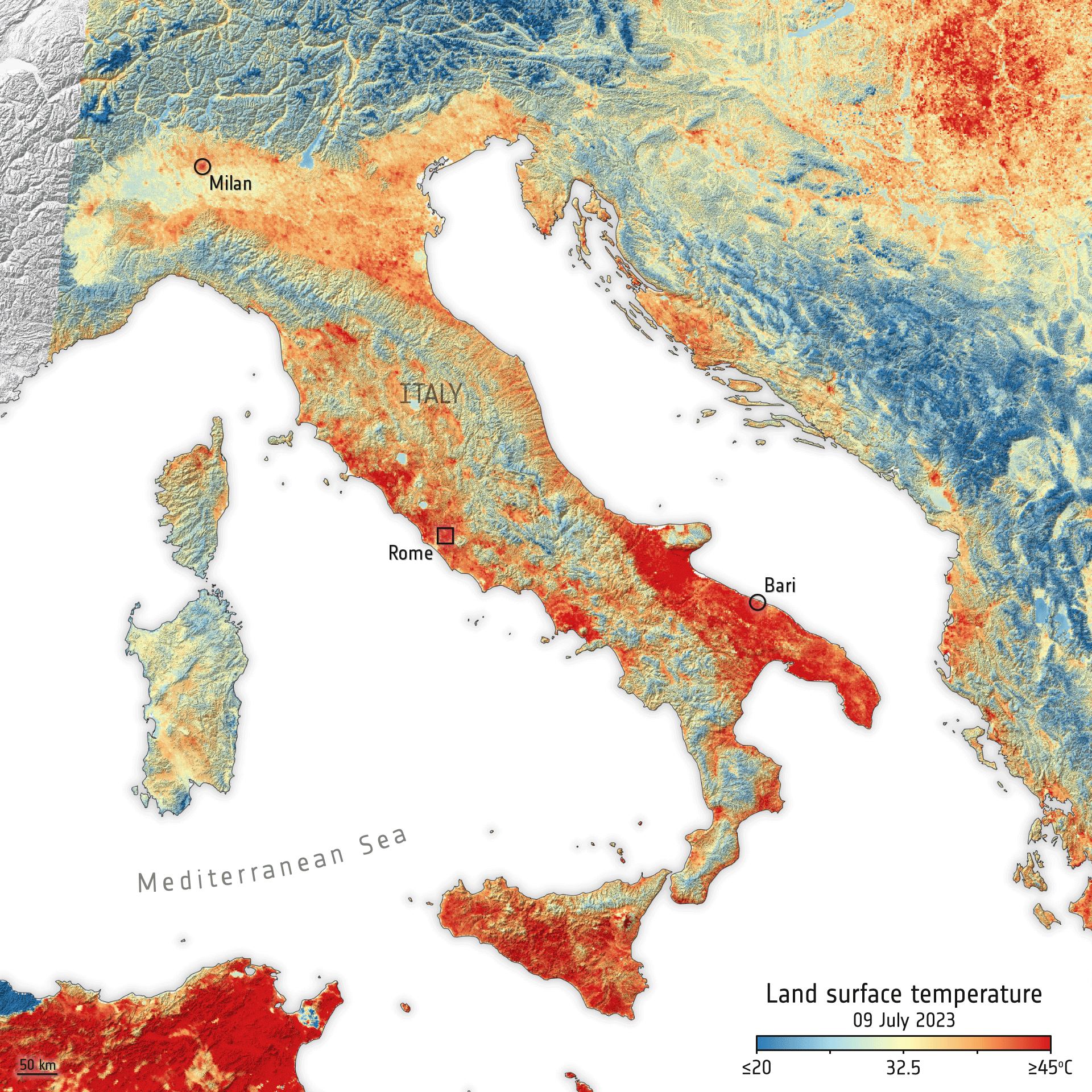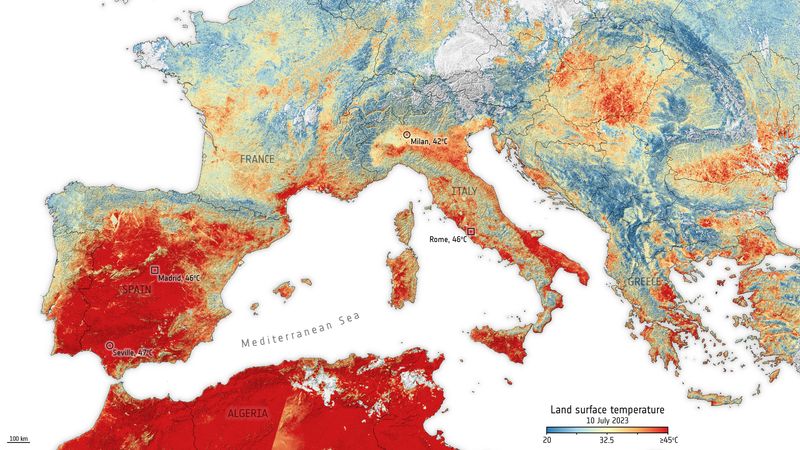Anticyclones are, as the word implies, the opposite of a cyclone. Where a cyclone brings stormy weather and fast winds, anticyclones are high-pressure zones where winds move more sluggishly. For these reasons, they are associated with sunny, warm weather. But they can easily become heat traps. The high pressure pushes air down, which warms as it descends. The slow winds trap it under this cap, leading to the formation of a heatwave.
This is what is happening in Europe at this very moment. The combination of human-caused global warming, massively helped this year by El Niño, will lead to an intense couple of weeks across the southern portion of the continent. Expectations and models suggest that temperatures will break records in many cities – including Rome, which could break its record of 40.7°C (105.3°F), set in June 2022, by several degrees over the next two days.
Meteorologists are also concerned that the heat record for the continent of Europe is about to be broken. The current record in Europe is 48.0°C (118.4°F), recorded in Athens on July 10, 1977, according to the World Meteorological Organization. That record is based on measurements of air surface temperature from ground stations and does not cover the territory uniformly.
Satellite observations instead take measurements of how hot the surface of the planet would be to the touch, and these measurements are higher than air temperatures. Observations from the European Space Agency’s Copernicus Sentinel-3 mission’s radiometer instrument at the beginning of last week show land temperatures exceeding 45°C (113°F), in many cities, including Rome, Naples, Taranto, and Foggia. Mount Etna in Sicily had temperatures on its slopes of over 50°C (122°F), and that’s not from the lava.
That was last week – now is when the heatwave is reaching its maximum.

This heatwave is not only hotter, but it is also longer than before. Recent work suggests that they are getting hotter and lasting longer, around two weeks. Also, models show that climate change is making the most extreme ones more common. An extreme heatwave that would happen once in a decade now has a chance of happening once every couple of years in Southern Europe.
An extreme heatwave happened last year across the continent, and it has been estimated to have caused the deaths of about 60,000 people. Heatwaves can not only kill immediately, but have a long-lasting effect on the health of a population.
June 2023 was on average, around the planet, the hottest June on record, and the first week of July was the hottest seven continuous days that our planet has experienced in the last 100,000 years. Bold actions to tackle the climate crisis are sorely needed to mitigate the effects that the emissions of greenhouse gases from the industrial revolution to today are having on the planet.




